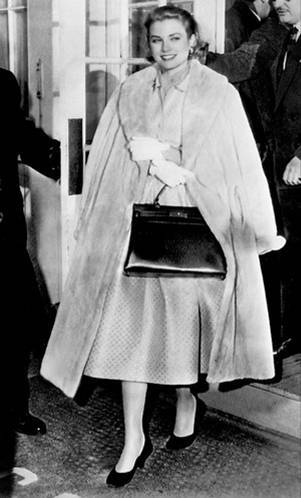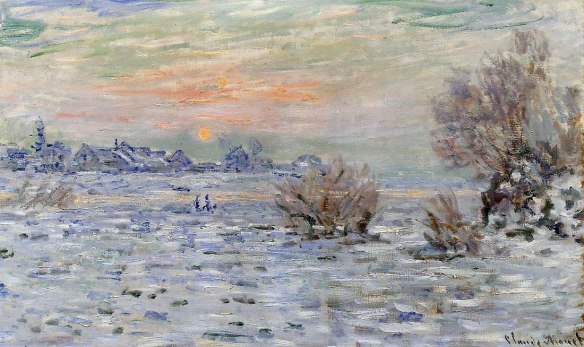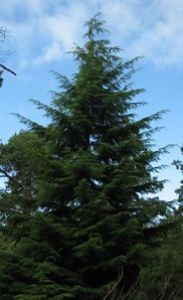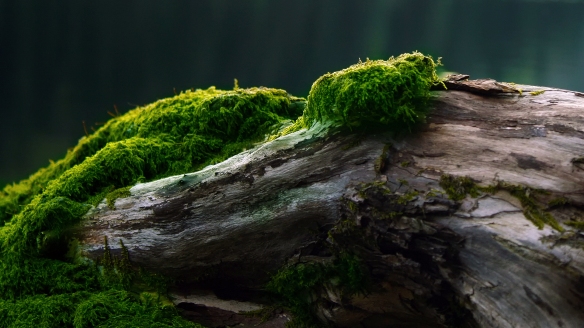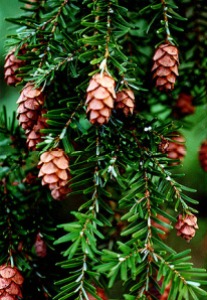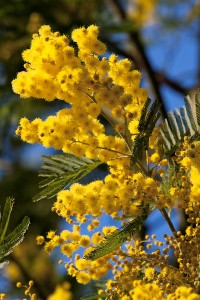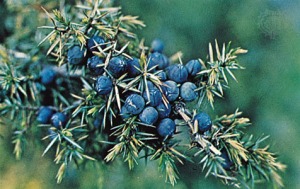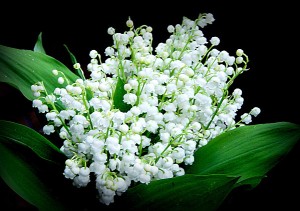The icy steppes of Russia, the opulence of a Romanov Tsarina, a mix of hauteur and passion, brocades and fur, sweeping dresses and fabulous jewels….

Photo of Tsar Nicholas II accompanying Tsarina Alexandra and Dowager Empress Maria Feodorovna, at the Winter Palace. Photograph circa 1901 by Burton Holmes. Source: Angelfire.com
Those images are the source of inspiration for Tsarina, the new fragrance from the London luxury perfume house, Ormonde Jayne. It is one of four fragrances in the new Four Corners of the Earth collection which was released in late 2012 and which pays homage to the different parts of the world that have inspired Ormonde Jayne’s founder, Linda Pilkington. The collection is the result of collaboration between Ms. Pilkington and the perfumer, Geza Schoen, and consists of four fragrances: Tsarina, Qi, Montabaco and Nawab of Oudh. I have samples of all four fragrances, provided courtesy of Ormonde Jayne, and will review each one in turn, starting now with Tsarina.
 Ormonde Jayne describes Tsarina as follows:
Ormonde Jayne describes Tsarina as follows:
Tsarina captures opulence and passion. It demands fur, leather, brocade, heavy silks in sweeping dresses and fabulous jewels to go with her haughty heritage. To call it a floral oriental is to misunderstand its rich complexity, it is more baroque. The perfume is profound, blending leather notes, rich Madagascan vanilla, amber and orris butter.’ This is a powerhouse perfume, ravishing and regal, distinctive and synonymous with the glamorous world of luxe.
Tsarina’s notes include:
top: mandarine, bergamot, coriander, cassis. heart: hedione, freesia, jasmine sambac, iris, suede. base: sandalwood, cedar, vanilla bean base, labdanum, musk.
The description of Tsarina, along my past historical writings on both royalty and the Russian Imperial Family, led me to anticipate either Catherine the Great or Alexandra Romanov, last Tsarina of that ill-fated family. I expected images of snowy St. Petersburg, furs, jeweled chains of opulence, and a heady, baroque oriental that epitomized hedonistic splendour and excess.
Instead, I found an incredibly elegant, soft iris and suede scent that — to my mind — consistently evoked the cool, restrained, pale beauty (and occasional hauteur) of Princess Grace. Tsarina is, at times, as fizzily fresh and crisp as the best champagne (if there were ever a citrus, lemon champagne), at other times icily cool, but always romantic with a plushly soft heart like the finest suede coat matched with dove-grey gloves.
Tsarina opened on my skin with the freshest burst of citrus imaginable. It was so zesty, it felt as though you’d just cut into a lemon and been squirted by its juices. Light and bright, it mixes with the sweet, airy scent of freesia, some subtle musk, and an underlying note of soft, white woods. There was also a very faintly soapy element that creeps around the edges, mixing with the citrus accord, to add to the impression of a very fresh, Spring-like scent. The woody note is subtle, but even more subtle was the orange tonality which flickered for a brief moment before vanishing entirely. I tested out Tsarina three times, and mandarin never appeared for me at all during the other two tests.
Everything feels green, fizzy and bright, thanks, in part, to the hedione which seems to be a very significant molecule in 20th century perfumery. (You can read Bois de Jasmin‘s discussion of its uses in everything from highlighting jasmine to its role in Eau Sauvage, Diorella, and Van Cleef & Arpel’s First.) The Perfume Shrine explains that hedione is an aromachemical that is often used as a substitute for jasmine absolute, “but also for the sake of its own fresh-citrusy and green tonality.” It is said to “give fizz to citrus notes much ‘like champagne’.” Here, with Tsarina, it does just that, lending a sparkling quality to the bergamot lemon, while also adding its own green touch.
 Less than ten minutes into the opening of the Tsarina, the perfume’s strong backbone of suede raises its head. Soft, buttery, white-dove grey is the colour that comes to mind, tinged with delicate iris, and the whole thing set against a backdrop of lemon. As time passes, the citrus note fades and the iris suede takes over completely. It smells exactly like the soft, light interior to a very expensive purse. There are growing peppery smoke notes from the cedarwood, combined with the light musk and those airy, pastel freesia blossoms. The merest hint of soap weaves its way around all those notes, joining another subtle thread in Tsarina’s tapestry: powder. Iris often has a very powdery characteristic, but it’s very light here. Instead, the much plusher orris butter creates a velvety soft image, accentuating the grey suede note. It’s very cool in tone; never quite icy but never effusively warm, either. It has a regal hauteur and quiet aloofness, if you will.
Less than ten minutes into the opening of the Tsarina, the perfume’s strong backbone of suede raises its head. Soft, buttery, white-dove grey is the colour that comes to mind, tinged with delicate iris, and the whole thing set against a backdrop of lemon. As time passes, the citrus note fades and the iris suede takes over completely. It smells exactly like the soft, light interior to a very expensive purse. There are growing peppery smoke notes from the cedarwood, combined with the light musk and those airy, pastel freesia blossoms. The merest hint of soap weaves its way around all those notes, joining another subtle thread in Tsarina’s tapestry: powder. Iris often has a very powdery characteristic, but it’s very light here. Instead, the much plusher orris butter creates a velvety soft image, accentuating the grey suede note. It’s very cool in tone; never quite icy but never effusively warm, either. It has a regal hauteur and quiet aloofness, if you will.
The perfume is surprisingly soft and lightweight in texture, though strong in its initial moments. However, after less than forty minutes, the sillage drops dramatically. It’s as gauzy and light as the softest pashmina scarf, resting just lightly on your skin with a grey-pastel touch of iris, suede, heaps of freesia and a touch of vanilla.
The wood and smoke notes flicker here and there, popping around like ghosts. Often, in other treatments, cedarwood can seem excessively peppery and smoking, verging sometimes on the mentholated. Here, however, the impression is of soft cashmere woods with something a bit unexpected. On two of my three tests of Tsarina, I picked up something that definitely smelled of anise. It’s as though the often mentholated aspect of cedar has been tamed or quietened to such a degree that there is just the merest hint of its chilly, smoky, licorice-y character, now diluted down to a faint soupçon of mere anise. It’s in perfect keeping with the restrained, elegant aspect of the perfume.
Three hours in, the base notes of Tsarina start to emerge. There are quiet elements of sandalwood, vanilla, and sweet notes from the jasmine, but the real end of Tsarina is labdanum. It is a rich, nutty, slighty leathery, minutely dirty and animalic resin that is one of my absolute favorite notes. Here, it’s light and sheer, far from opaquely thick or molten. The labdanum is subtly tinged by the other notes at times but, for the most part, Tsarina’s dry-down consists primarily of the ambery resin, some powder, and little else. It’s pretty but, for my tastes, too light, sheer and simple.
All in all, Tsarina lasted just under 6 hours during my first test and a bit under 5 hours on the subsequent tests when I applied a lesser quantity. I have perfume-consuming skin, but I was nonetheless surprised at the moderate-to-short longevity for an eau de parfum concentration. (My beloved Tolu which is also an Ormonde Jayne eau de parfum lasted 7 hours when I reviewed it and just over 8 hours on a recent wearing.) The softness of Tsarina and its delicate notes are, perhaps, one explanation. The sillage began by being relatively good for the first 20 minutes, then dropped down to moderate-to-low thereafter. It became extremely close to the skin by the second hour; by the fourth, I thought the scent had vanished completely but faint traces lingered on, here or there, for another one to two hours (depending on test run).
There aren’t a ton of reviews on Tsarina out there. One of the few is from the Candy Perfume Boy who seems to have a very different experience than I did:
Everything about it is evocative of the opulent jewellery, furs and textiles that the description mentions and the Russians are famous for. It opens diffusive and bitter, hinting at the animalics to come but what’s really noticeable is a warm plushness, tinged by a darkness that comes from a combination of the powder of iris and indole of jasmine.
The whole thing is, dare I say, rather Guerlainesque with its bergamot, sweet floral powder and balsamic funk. Tsarina is like Shalimar Parfum Initial but on a bigger budget (we’re talking a Tsars budget here people), cutting straight through the fruit and heading straight for the rooty iris and gorgeous, filthy base of proper Shalimar. It doesn’t mess around, to put it frankly.
Tsarina is an incredibly feline fragrance, like a beautifully sleek black cat come in from the cold, slinking and weaving itself between your legs. Like a cat it is incredibly precious but not afraid to use its claws to assert it’s authority. There’s glamour here of course, but there’s also a steely strength just beneath the surface that says; “I may be incredibly beautiful but I’m even more dangerous”.
I didn’t get any of that, I’m afraid. My experience evoked not just Grace Kelly, but the softness of an Impressionist painting of winter. Something by Claude Monet, in fact.
All in all, I thought Tsarina was pretty and I liked it, though I expected to truly love it. Had I smelled the mandarin orange and leather — and had the labdanum been heavily resinous and opaque, thereby evoking furs, leather and baroque richness — I probably would have. Instead, Tsarina was predominantly velvety soft iris and suede on my skin. All three times I tried it! I should note that iris is not one of the notes which drives me wild with passion. In fact, it can be a note I struggle with, depending on what accompanies it. That said, I think this is one of the best treatments of iris that I have encountered in a while. In addition to my iris issues, however, Tsarina was also far too soft, gauzy and sheer for my personal tastes — both in terms of weight and in sillage. The longevity was also a problem, though the speed with which my skin can consume perfume is not the norm.
I’m afraid my heart still belongs to Tolu, though I have to admit that there is something about Tsarina’s plush, velvety softness that is quite alluring. Its cool elegance is comfortable and easy, like the best pashmina cashmere scarf or the richest suede caressing your skin. I know a number of my regular readers are complete fiends for soft, harmonious iris scents and, to them, I say, I think this will knock your socks off!
Unfortunately, Tsarina is not the easiest thing to get your hands on right now. It is not even listed yet on the company’s website (though it probably will be soon), and doesn’t seem available at other European retailers. As always, Ormonde Jayne fragrances are not sold in the U.S. At the moment, Tsarina is available at Ormonde Jayne’s two boutiques in London and is also available online at Harrods. That seems to be about it. Even worse, none of the perfume sample sites in the US currently offer any of the Four Corners of the Earth collection. So, you can’t even get the chance to sniff it! (When places like Surrender to Chance start selling samples of the collection, I will update this post accordingly.) Given the price, this is not something I would recommend buying blindly and unsniffed unless you know you love soft iris scents. The perfume comes only in one size — a large 100 ml/ 3.4 oz bottle — and costs £280.00. At the current exchange rate, that comes to approximately $422!
I think cost is all relative and subjective. It depends on the person and how much they adore something. So, for those who love harmonious, elegant. quietly restrained scents, especially of iris and suede, Tsarina is definitely one to try out.
Disclosure: My sample of Tsarina was provided courtesy of Ormonde Jayne. However, that did not impact this review. My primary commitment is, and always will be, to be as honest as possible for my readers.

